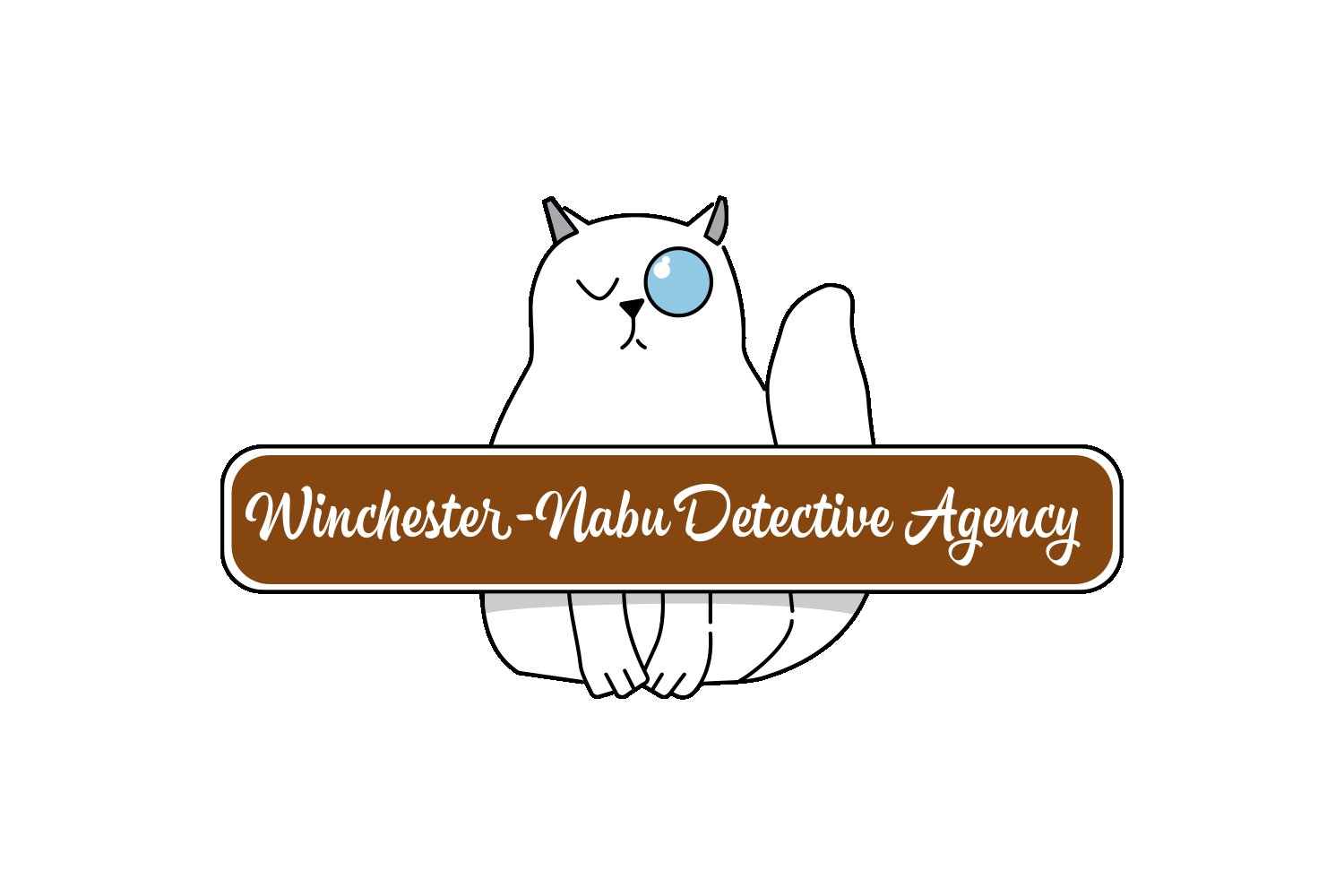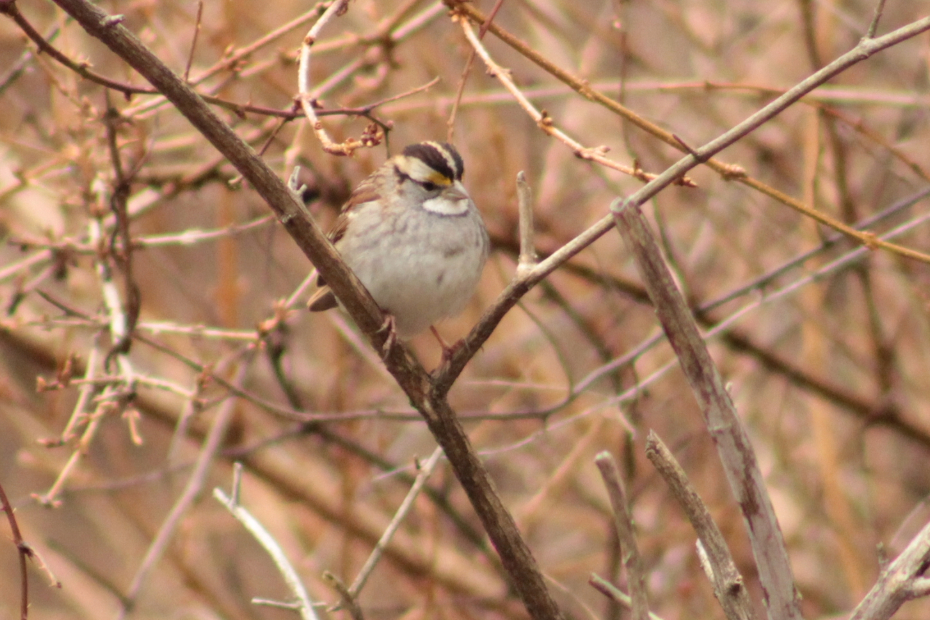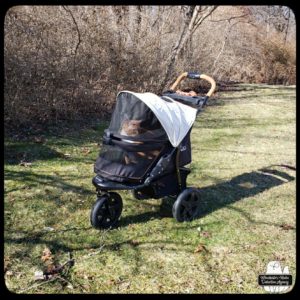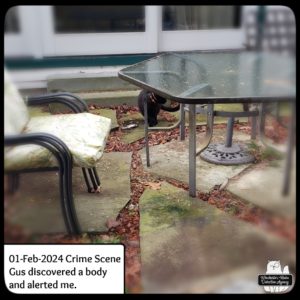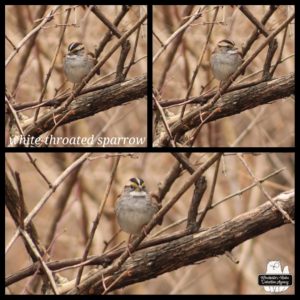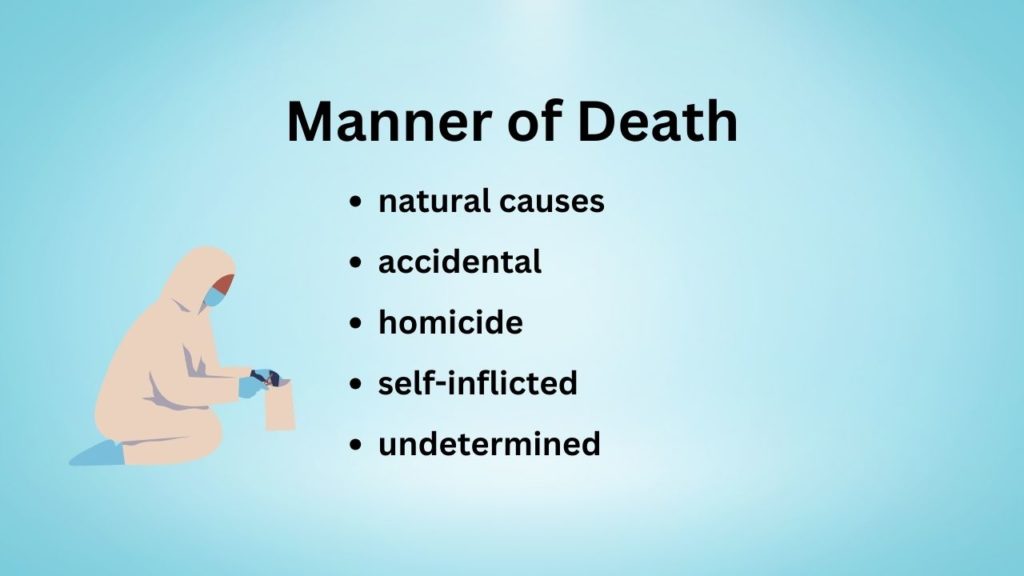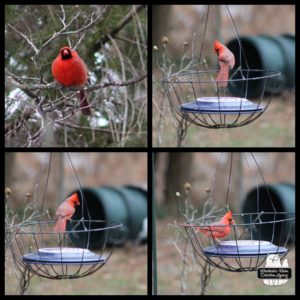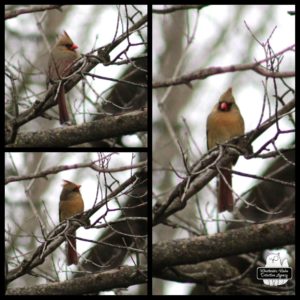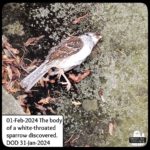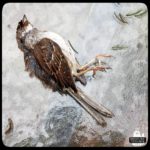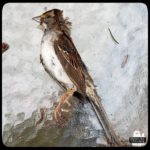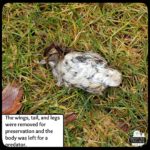This work is supported by the generous backers who adore my cat stories at Patreon.com/amberunmasked and they also get first access to what’s happening with my books and podcast.
Where We Left Off:
The cat detectives and humans found multiple tracks in the snow from an unknown beast.
Another Body at the Door:
This is a tragic case which Gus and Oliver were eager to solve. Since we’re a private investigations agency, we don’t have a medical examiner or pathologist to make determinations on the dead bodies we find. We rely on research and our own observations and testing. Sometimes, we even show our evidence to our supporters and get their input before we come to conclusions.
On February 1, 2024, Gus discovered another body. The images of the victim presented in this case file aren’t gory or gruesome, but I will warn that they are sad.
We had already been feeding the critters all around at the usual snack bars. Gus and at least three grey squirrels had a cardio workout while doing parkour training at the edge of the woods. Life had been feeling happy and invigorating until we made our way to Oliver’s patio.
The Discovery:
I watched Gus walk over to one set of steps. He often sits there for stakeouts of chipmunks. Instead of sniffing at the small openings where the steps meet the side of the house, Gus used his SuperSmeller on something else. Something on the ground. From where I stood in the grass, I could see a small white blob on the slate. I knew he hadn’t captured anything. I would have seen it. I approached as Gus was turning away.
“What is it?” I stepped over the flower bed which had decayed signs of last fall’s plants.
“A body. A sparrow. I didn’t do it,” Gus grumbled and wouldn’t look directly at me.
“I know you didn’t do it. I’m standing right here.” We were on the opposite side of the patio from where I set up a makeshift bird feeder. He has leaped at birds and critters there before, but hasn’t injured any in that spot.
I got a close look. The poor thing. Small and beautiful in its repose. Its white belly still luminous despite spending a night of rainfall. It was a white-throated sparrow.
Facts About White-Throated Sparrows:
These are abundant songbirds living in Canada and the United States (for the New World variety). They nest either on the ground or just off the ground in vegetation. They love forests, trees, low and dense vegetation. You can also find them around meadows and ponds or other watery spots that are surrounded with grass. In a region like New Jersey where there are woodlands, swamps, cities with parks, and suburbs, these little birds prosper. They eat seeds, insects, and surprisingly snails. Their eggs are not white though you can expect them to be tiny. The eggs are pale blue or greenish-blue with speckles. I love how AllAboutBirds describes the nest building routine of these sparrows:
The female builds the nest mostly in the morning. She finds a depression in the ground and builds it up with pieces of moss. Next, she builds the nest walls using grass, twigs, wood chips, pine needles. She then makes a lining of fine grasses, rootlets, and deer hair. The nest is typically concealed from above by leaves and visible from only one side. The finished nest is 3-5.5 inches across on the outside, with an inner cup 1.7-4 inches across and 1-2.5 inches deep. White-throated Sparrows don’t reuse their nests.
Personally, what makes these sparrows stand out for me is the color pattern on their heads. It reminds me of racing helmets. Brown and white strips with a central yellow marking. The “chin strap” is of course their signature white throat. After Gus and I found this victim, we went to the Big Rock and watched more birds. I snapped a few photos of a round white-throated sparrow among the lot of them knowing that I would have to highlight how attractive they are in to balance a case file about a morbid death.
The Investigation:
While we were still at the patio, I carefully laid the bird’s body on a table and looked for signs of violence: teeth or claw marks, missing feathers, broken wings or legs. This bird looked perfect. Its black eyes were open. If not for that, it would have looked like it was sleeping. I was able to examine the wings and spread them open. The legs were mobile and not damaged. No signs of blood anywhere.
Manner of Death:
Cause of Death:
I was surprised when I discovered how debatable the Cause of Death can be in a case. Sure, we watch a lot of crime dramas and “true” crime shows—those often take artistic liberties. The CoD is an opinion by the person signing the death certificate—medical examiner or coroner—not all of which are practicing pathologists. In New Jersey, the statute states:
He shall be a licensed physician, a resident of the county, of recognized ability and good standing in his community, with such training or experience as may be prescribed by standards promulgated by the State Medical Examiner by rule or regulation. N.J. Stat. Ann. § 40A:9-46.
Let’s say you find a 300-pound male dead in a kitchen with no signs of blood or violence overtly visible. A coroner could sign off on their part of the death certificate as “heart attack due to obesity” or something medical-sounding like that; when in fact, the person was poisoned. That’s why autopsies are important.
In our case of this white-throated sparrow, there was no apparent cause visible with external examination. I was not about to perform a necropsy on one of the patio tables without a lot of prior research and proper tools. I did a rough job of removing some bits for preservation and put them in desiccant sand. This meant that Gus and I had to take in all the possible clues from the crime scene.
The Crime Scene:
Shown in the video is the immediate discovery of the victim’s body in the patio. The crime scene can be described as having two sides depressed into the ground and surrounded by stone walls of varying heights; the floor of the patio consists of large slabs of slate which are not the same thickness or area; there is one set of cement steps leading up to the ground in a corner; the third wall is a fence with a gap underneath; there are two sets of cement steps against the fourth wall which is the building and those steps lead to large glass doors.
There are two tables and various chairs. The flower beds along the rock walls are dead for the winter season, but the hardy herbs like thyme still have some green to them.
Gus and I had a pretty good idea at this point of what we needed to do next. We found a couple local birds and interviewed them to see if they knew anything about this victim or the white-throated sparrows of this neighborhood. For that, we turned to a pair of cardinals. The cardinals are submissive to the Blue Jay Gang and keep their distance from criminal activity. They intermingle with other birds like sparrows, titmice, chickadees, and nuthatches.
Interviews:
On this day, Oliver was willing to get into his buggy and make his rounds. I had to chauffeur him since it was a weekday and his favorite human, The Cook, was busy in the kitchen. It was Ollie who suggested that we should inquire with the cardinals. We didn’t have to wait long for a pair to show up for bird seeds, Mr. Slaughter and Ms. Briscoe.
Mr. Slaughter made the mistake of trying to talk over Ms. Briscoe.
“I got a voice and I’m gonna use it—real loud whenever I want,” she said.
She actually had a beautiful voice as cardinals do being part of the songbirds. All we needed were some facts and not their personal life stories. Ollie asked Slaughter and Briscoe if they knew anything about the sparrow found in the patio. We hit a jackpot! We got a name.
“That’s Maurice Sparrow. Everyone called him Mo,” Briscoe said.
“Did he have any enemies?” Oliver asked.
“Not that I ever heard,” Slaughter said.
“Nah, me neither,” Briscoe said. “Seemed like a good guy.”
We left the cardinals and reconvened back in the office. No enemies. No motives we could figure out. The only suspects left were free-roaming cats. The Cook and Oliver saw a long-haired cat in the patio the same week as Maurice’s death. We put out the word to our CIs that we wanted information on that cat immediately.

Working Theories:
- Maurice Sparrow was the victim of homicide likely by a feline roaming on the property without permission.
- Maurice Sparrow accidentally flew into the glass doors and suffered a fatal brain injury or broken neck.
To “dispose” of the body, I placed it in the grass in front of one of the trail cameras. Yet, there are no photos or videos showing what animal claimed it for a meal.
Case Findings:
With no evidence of violence, Oliver and Gus deduced that Maurice Sparrow died after accidentally flying into the glass. Male white-throated sparrows can get aggressive with each other, but it is usually in mating seasons. Maurice either saw his own reflection and felt threatened; or he didn’t notice the glass at all and thought he could fly into Oliver’s side of the residence.
Case Status: Closed
PHOTOS OF DEAD BIRD
Resources:
Sondik, E.J., et.al. (2003) Medical examiners’ and Coroners’ Handbook on Death Registration and …, Center for Disease Control. Available at: https://www.cdc.gov/nchs/data/misc/hb_me.pdf (Accessed: 06 February 2024).
Manner, Cause, and Mechanisms of Death: 3 Key Differences
